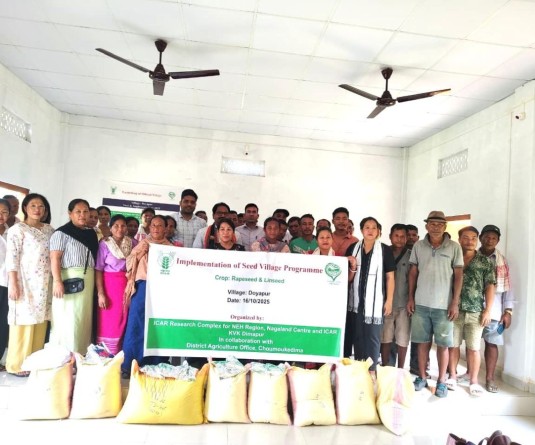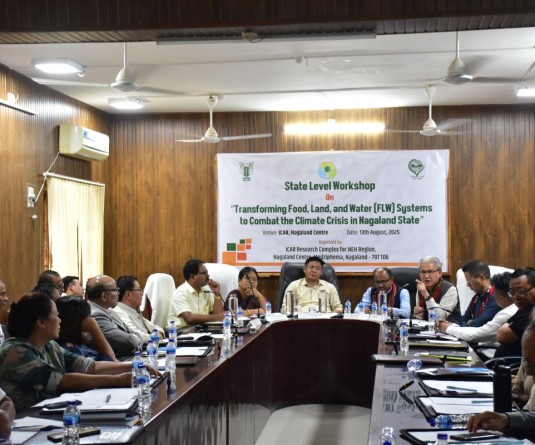
Hannah Krujia Asangla
CTO – Agronomy, KVK Phek
Conservation Agriculture (CA) is an agricultural system designed to enhance productivity while protecting and conserving the environment. It aims on minimizing soil disturbance, maintaining soil cover, and diversifying crops to ensure long term agricultural sustainability. This approach intend to balance economic, social, and environmental goals, offering a pathway to sustainable farming in the face of global challenges like soil degradation, climate change, and biodiversity loss.
Key practices in conservation agriculture:
- No-Till Farming: No-till farming is an agricultural practice where seeds are directly planted into undisturbed soil, without the traditional ploughing or tilling that inverts the soil layers. This method preserves and improves the soil structure, enhances organic matter retention, reduces soil erosion, conserves water, supports biodiversity and lowers input cost and energy use.
- Cover Crops: Cover crops are plants grown primarily to protect and improve soil rather than for harvest. They are an essential component of sustainable farming systems, offering multiple ecological, agronomic, and economic benefits. Commonly used cover crops include legumes, grasses, and brassicas. Cover crops absorb carbon dioxide during photosynthesis which contributes to carbon sequestration in soil. It also prevents soil erosion, increase soil fertility and suppresses weed growth,
- Crop Residue Management: It refers to the practice of handling leftover plant materials, such as stalks, leaves, and roots, after harvesting. Instead of burning or discarding these residues, they are retained on the soil surface, incorporated into the soil, or reused to enhance agricultural productivity and sustainability. Incorporating crop residues into the soil increases organic carbon content thus improving soil health and higher organic matter content in the soil which enhances microbial activity and contributes to carbon sequestration.
- Biodiversity in Conservation Agriculture: Biodiversity is a cornerstone of conservation agriculture (CA), promoting resilient ecosystems that support sustainable farming. By fostering a variety of plants, animals, and microorganisms, diversified cropping systems enhance ecosystem services such as soil fertility, pest control, pollination, and water regulation, all of which are critical for agricultural productivity and environmental health.
- Climate Resilience: Climate resilience in agriculture refers to the ability of farming systems to withstand, recover from, and adapt to climate extremes such as droughts, floods, heat waves, and erratic rainfall. Conservation agriculture (CA), with its emphasis on soil health, biodiversity, and sustainable practices, plays a critical role in building resilient farming systems.
Conservation agriculture (CA) is a transformative approach that balances agricultural productivity with environmental stewardship. By focusing on minimal soil disturbance, permanent soil cover, and diversified cropping systems, CA enhances soil carbon sequestration, a vital strategy for mitigating climate change. Healthy soils enriched with organic carbon not only act as a sink for greenhouse gases but also support resilient ecosystems capable of withstanding climate extremes.
The adoption of CA practices reduces the dependency on energy intensive inputs, minimizes emissions, and promotes sustainable land use, making it an essential tool in the global fight against climate change. Moreover, the co-benefits of improved soil health, biodiversity, water conservation, and economic resilience create a foundation for long term food security and sustainable development.
While challenges such as upfront costs, knowledge gaps, and policy barriers remain, targeted investments in research, technology, education, and supportive policies can accelerate the widespread implementation of CA. As the world struggles with the dual crises of climate change and soil degradation, conservation agriculture offers a proven, scalable, and sustainable solution to enhance soil carbon sequestration and secure a more climate resilient future.






